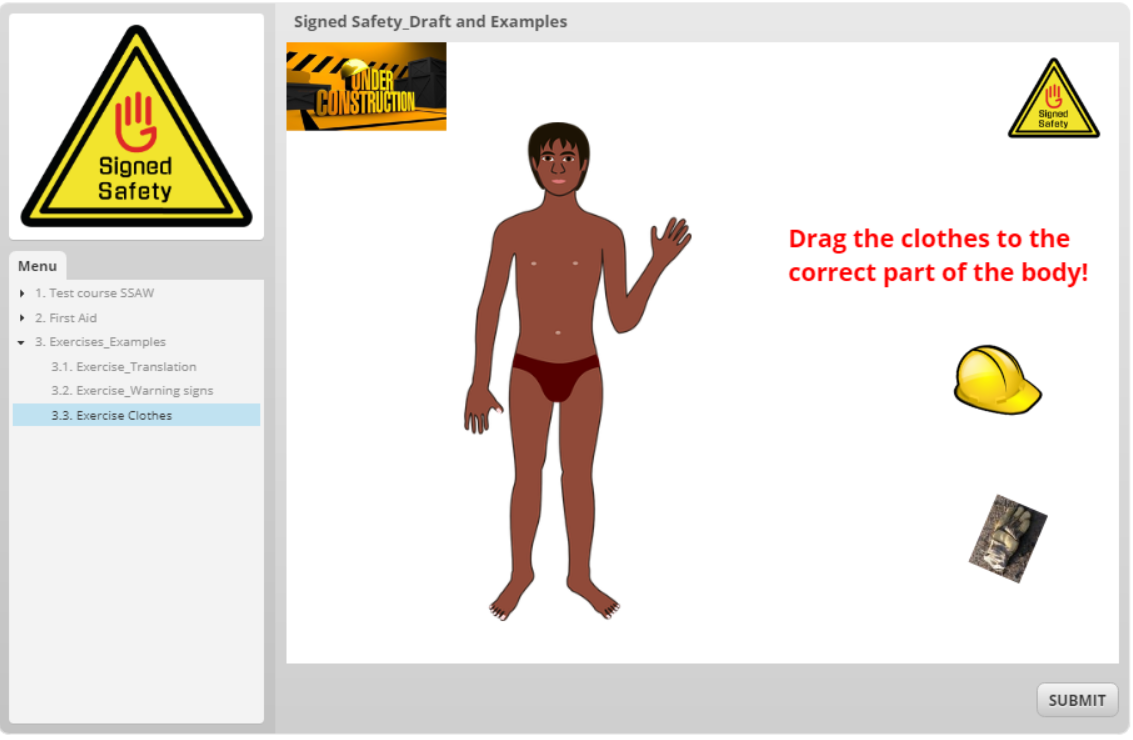As the e-learning resource will be used for deaf people and migrants who both may not have complete command of the written national language, it will be important to design the course as visual as possible. At the moment, we are evaluating two possible programs: LearnDash, which is based on WordPress, and Articulate Storyline 3, which is based on PowerPoint. As far as we can see at the moment, the best solution might be integrating both programs: LearnDash for the structure of the course and the learning management system, and Articulate Storyline 3 for animations and other visualizations. A short example course has been done with Articulate Storyline 3, using videos from the First Aid section for learning and for some exercises. We will do some tests on how to integrate this into LearnDash; for this purpose, we have converted the course to various formats. Bellyfeel checked whether this would fit in with LearnDash. This was also discussed during a Skype conference. The latest development here is that we will design the underlying structure of the course and then adapt this to the two programs.
The final design will also depend partially on which device we should focus on most. Will people use the course to learn in a kind of classroom setting? Will they use it on their mobile phone to check up on something quickly while they are, for example, at a construction site? Will they use it on their tablets for mobile learning? While the course should be available on all possible devices, the size and handling of the primary device will have some impact on how we will arrange the contents.
However, there will be some more discussions before we can come to a final decision. We will keep you posted on further developments.
As for the course contents, there will be three different kinds of content:
- A general guide that gives some advice on how to interact with deaf people
- A learning part that allows you to familiarize yourself with the safety signs
- A practice part with exercises
For the learning part, the videos from the project homepage will be used. As for the further contents, all the partners have been asked by the lead partner (i.e. Austria) to brainstorm for ideas and then send them to Austria. The Austrian partner will collect and organize all the ideas and implement them in the course. The final course contents will then be discussed in detail during the next partner meeting, which is to take place in Klagenfurt, Austria, on the 23rd to 24th of April, 2020.


